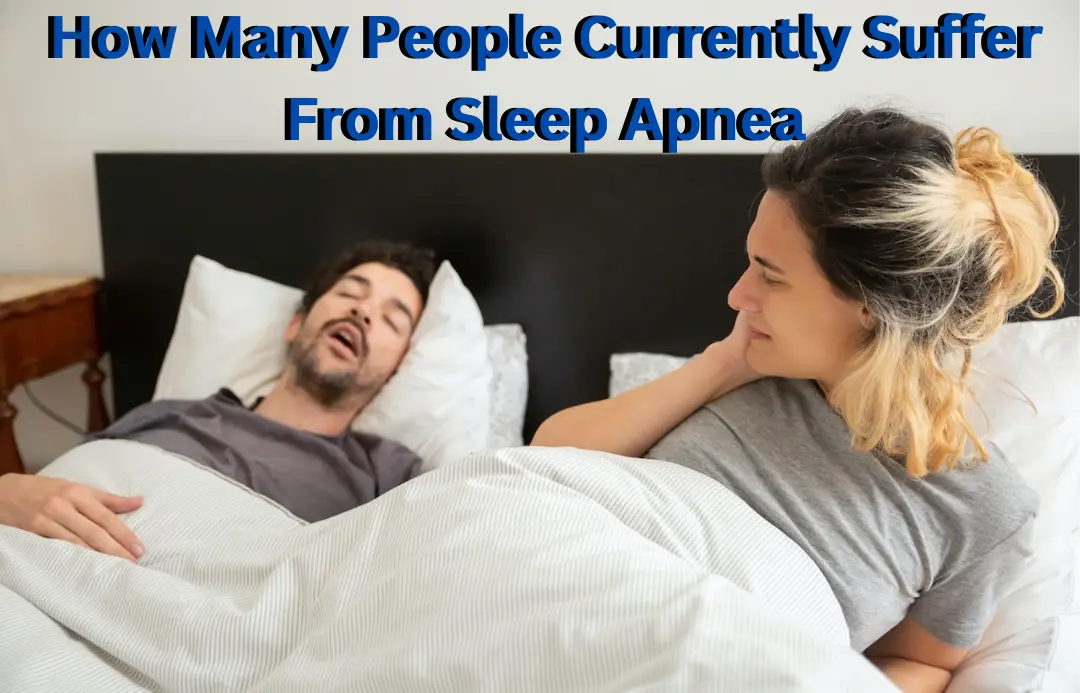How many people currently suffer from sleep apnea? Worldwide, an estimated 1 billion people have sleep apnea. In the U.S., 22 million.
According to the National Library of Medicine (NLM), the leading countries are China, then USA, Brazil, and India in that order. Sleep apnea has become one of the world’s biggest health concerns . This is not solely because so many people have it. Rather, because so many people have it and do not know or refuse to be treated.
I’m Aaron, sleep specialist. This article will go in depth of the statistics of people who suffer from sleep apnea.
How Many People Have Undiagnosed Sleep Apnea?
Again, this is only an estimate, but according to studies 2-4% of the world population live with undiagnosed sleep apnea. You may think this is not many.
Though, this is 1 in every 50 people in America. If you do the math, that is 440 to 880 thousand people that are living with undiagnosed sleep apnea in the United States alone.
How Prevalent is Sleep Apnea?
Currently, 20% or 1 in 5 adults have mild sleep apnea. Mild sleep apnea means you have 5-15 stopped-breathing episodes a night. Moderate is 15-30 episodes and severe is more than 30.
Only .9% of people suffer from central sleep apnea. Central sleep apnea is interrupted breathing as a result of incorrect signals sent from the brain to the muscles.
Not all people with mild sleep apnea need to be treated. The only way to truly know is to have a sleep study completed.
Who Suffers from Sleep Apnea?
Gender
Men have twice the chance compared to women of having sleep apnea. 2 to 5% of women are diagnosed compared to 3 to 7% of men. This percentage range differs so widely due obesity, age, and height.
Children
Although 20% of children snore, only 1 to 8% of them have sleep apnea between the ages of 2 to 8. Black children are 4-6 times more likely to have obstructive sleep apnea compared to white children.
Race
Similar results can be said for Black adults. African Americans are almost twice as likely, at 32%, to be diagnosed with obstructive sleep apnea compared to Asians or Whites. Native Americans are 1.7 times more likely at 30%, while Hispanics are 1.4 times more likely at 25%. Asians and Whites are at 18%.
These statistics are thought to be different due to craniofacial structure differences and obesity.
Age
As we age, that statistic rises. 26% of adults aged 30-70 have sleep apnea. After 40, it generally increases. This is thought to be as a result of multiple factors such as obesity, less exercise, and throat muscles relaxing more with age.
The Bottom Line
Sleep apnea is a serious health issue not taken seriously by many who have it. The estimates and non-diagnosed numbers prove that.
The amount of people who suffer from sleep apnea is continually on the rise. As population and obesity rises, so does sleep apnea. The good news is it can be treated, and possibly even cured, by change in diet and exercise in many people with mild cases.
Although continuous positive airway pressure treatment (cpap) is the standard for treating sleep apnea, there are some cpap alternatives you can try. Then, for the more extreme, there are also surgery options available.


